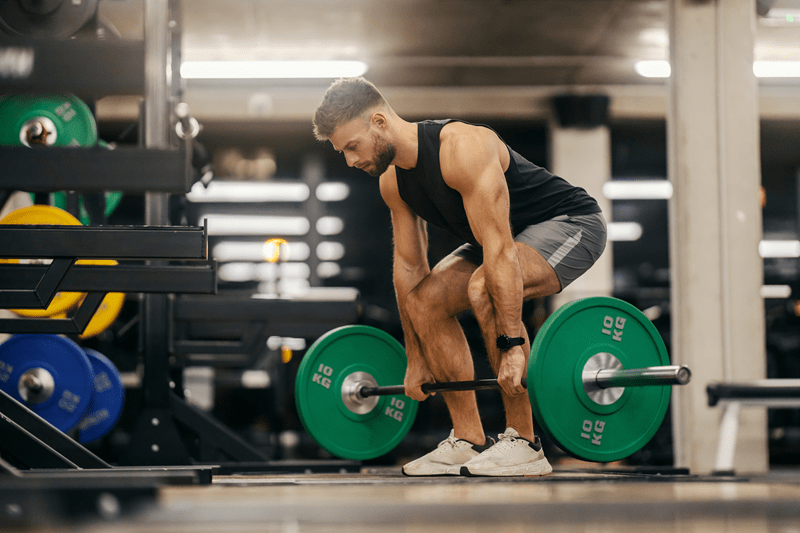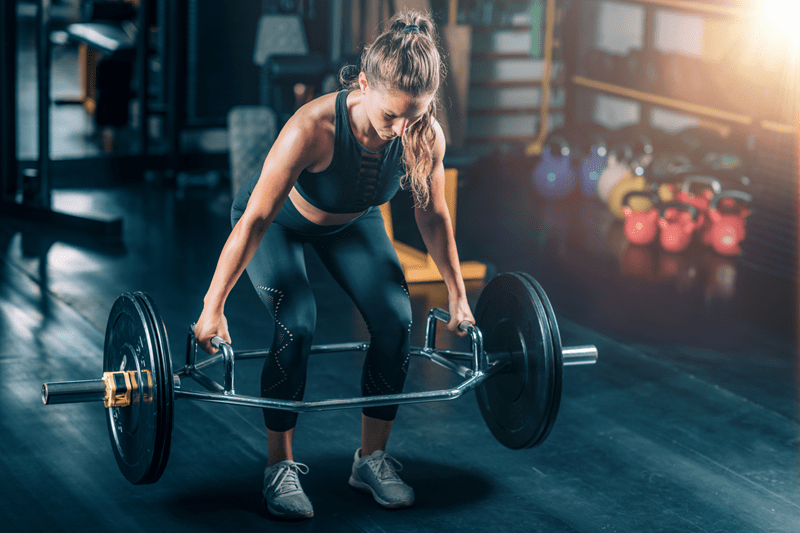
The Romanian deadlift looks simple on the surface. Pick up a bar, push the hips back, feel the stretch in your hamstrings and stand back up. But if that was all there was to it, everybody would have strong hamstrings and solid hinge mechanics. Instead, most people butcher the movement or load it too heavy without knowing what the romanian deadlift actually trains.
The Romanian deadlift is one of the strongest tools for developing the posterior chain. If you want stronger hamstrings, glutes that actually fire, and better hip hinge control, the RDL deserves a place in your training. Still, like any lift, the Romanian deadlift is not perfect. It can be overused, poorly programmed, or executed with sloppy technique. Understanding where it shines and where it falls short helps you train smarter.
In this guide, you will learn how to perform the Romanian deadlift correctly, how it compares with other hip hinge variations, the most common RDL mistakes and risks, and practical Romanian deadlift alternatives that target the same muscles without beating up your lower back.
The romanian deadlift is a hip hinge that targets the hamstrings and glutes through a deep stretch under load. That eccentric tension is what makes the RDL one of the most effective hamstring dominant lifts in strength training. While conventional deadlifts start at the floor, the romanian deadlift starts from the top. This top down setup allows you to focus on the stretch and control of the hinge rather than pulling from the ground.
Primary muscles worked:
Because the romanian deadlift is a hinge and not a squat, the hamstrings take the spotlight. This makes the RDL one of the most reliable posterior chain exercises for muscle growth and strength.
More to Discover: Strength & Conditioning Essentials for Non-Strength Coaches
The romanian deadlift is not about touching the floor. It is about controlling the stretch and keeping proper hinge mechanics.
Cue to remember:
"Hips back. Feel the hamstrings. Stand up strong."
Before getting stuck on one movement, you should understand how the romanian deadlift compares to other hinge patterns. A quick deadlift variation comparison helps you pick the best lift for your goals.
| Lift | Focus | Knee Bend | Best For |
| Romanian deadlift | Hamstring stretch and control | Slight | Strength and hypertrophy |
| Conventional deadlift | Full body power and leg drive | More | Max strength and pulling power |
| Sumo deadlift | Hips and quads | Moderate | Shorter range and less back stress |
| Stiff leg deadlift | Posterior chain but more lower back | Minimal | Stretch overload |
If you want maximum muscle activation in the hamstrings, the romanian deadlift wins. If your goal is maximal power or heavy loading, the conventional or trap bar deadlift might outperform it.

The RDL looks easy but it is also one of the most commonly butchered lifts. Most RDL mistakes and risks come from ego lifting or lack of hinge control.
Top errors you should avoid:
Training smart keeps the RDL safe and effective. When done incorrectly, the risk shifts from muscle building to lower back strain. Respect the hinge. The lift rewards patience and precision.
This may sound surprising, but the romanian deadlift is not always the most sport specific option. Some coaches argue that because the RDL is slow and controlled, it does not transfer perfectly to explosive movements. Athletes who need speed and power sometimes benefit more from hinge variations that involve more acceleration.
If your training goal is explosive performance rather than hypertrophy, you may benefit from adding alternative posterior chain exercises that include power output and hip extension drive.
Also check: Sports Rituals Around the World: A Cultural Deep Dive
If the romanian deadlift irritates your lower back, your mobility is limited, or you just want variety, try these Romanian deadlift alternatives. They target the same muscle groups and allow you to practice hinge mechanics from different angles.
Top alternatives:
These Romanian deadlift alternatives allow you to rotate movements without losing hamstring or posterior chain progress.
Ideal training ranges:
Where to place it in your workout:
Frequency:
Progression ideas:
You may like: Role of Cultural Values in Sportsmanship and Athletic Ethics
The romanian deadlift deserves a place in your training if you want stronger hamstrings, more powerful glutes, and a solid hinge pattern. It is one of the most effective hamstring dominant lifts and one of the best posterior chain exercises for muscle building. When combined with smart programming and proper technique, the romanian deadlift becomes a long term strength builder rather than a risky lift.
If you are bored of doing the same movement every week or if your lower back needs a break, rotate Romanian deadlift alternatives into your training. Pay attention to form, respect the hinge pattern, and focus on tension over ego. That is how you build real strength and avoid unnecessary RDL mistakes and risks.
This content was created by AI